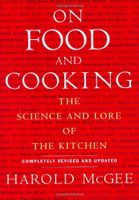Advertisement
Preserved Meats
Appears in
By Harold McGee
Published 2004
The preservation of meat from biological spoilage has been a major challenge throughout human history. The earliest methods, which go back at least 4,000 years, were physical and chemical treatments that make meat inhospitable to microbes. Drying meat in the sun and wind or by the fire removes enough water to halt bacterial growth. A smoky fire deposits cell-killing chemicals on the meat surface. Heavy salting—with partly evaporated sea-water, or rock salt, or the ashes of salt-concentrating plants—also draws vital moisture from cells. Moderate salting permits the growth of a few hardy and harmless microbes that help exclude harmful ones. Out of these crude methods to stave off spoilage have come some of our most complex and interesting foods, the dry-cured hams and fermented sausages.


